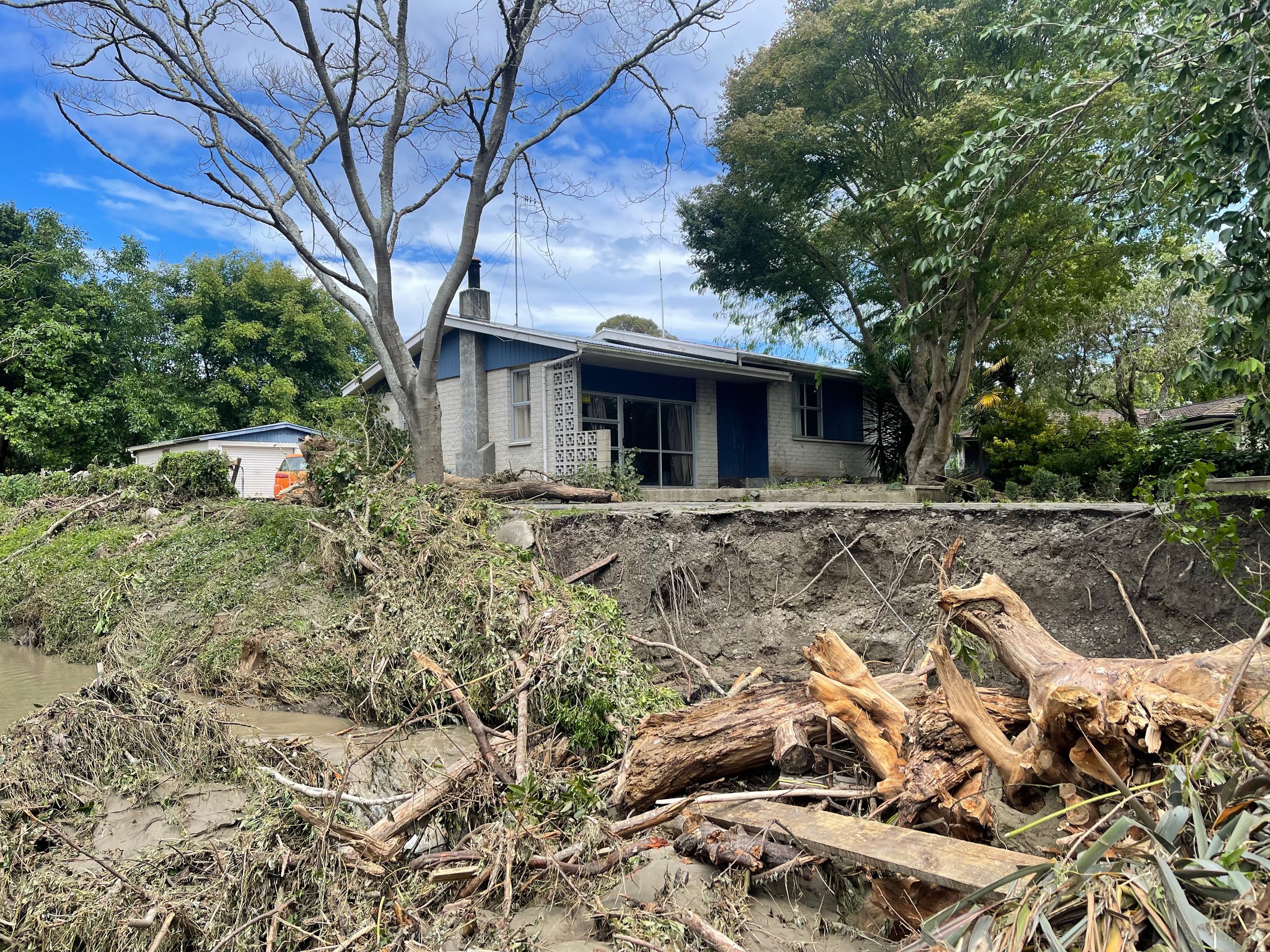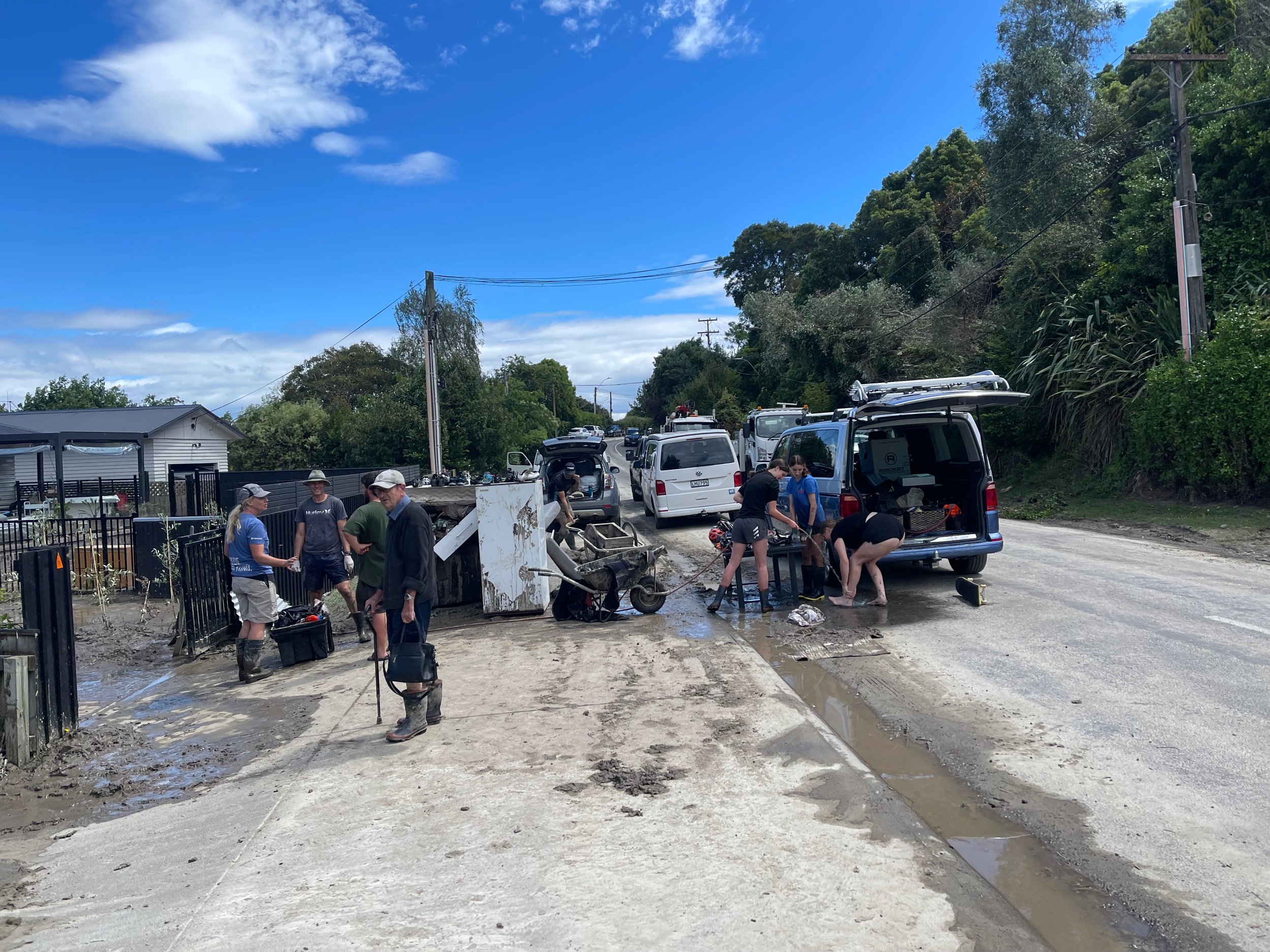Cyclone Gabrielle: Shannon Bray writes from Hawkes Bay
Climate Changed.
I am writing this as our situation in Hawke’s Bay continues. For those who experienced Christchurch in 2011, I’m sure the sound of Army helicopters overhead will bring back all sorts of memories. Trying to connect with friends who are only a few kilometres away, but who have no way of telling you they are safe. Counting how many bridges, roads, houses, lives have been completely lost.
This is the situation in Hawke’s Bay right now, and I am certain in many parts of the North Island. My family, my team and I are safe, but this remains a live, ongoing event.
Shannon Bray’s Hawkes Bay home. Image credit - Shannon Bray.
This is climate changed.
On Monday, I presented to the Select Committee which is considering the proposed new legislation that will govern the management of the environment. We talked about the connection between people, communities and place. The following day, I see this in action – all sorts of people, complete strangers, united in their desire to restore and rebuild our place. I have received words of support from friends and the professional community around the world, wondering how this will impact our “beautiful” region.
As landscape architects, we have talked about climate change. But have we really acted?
Image credit - Shannon Bray.
Our message to the Ministry for the Environment is that the new National Planning Framework needs to work in three, very important ways.
1. Scale
Firstly, we need to be able to consider and manage landscape at a variety of scales. Cyclone Gabrielle was, is, an event at a national, even international scale. Cyclones are the result of global weather patterns, affected by all manner of variables and events both within and outside of human control. Some question whether it is worth us trying to reverse these changes, or whether they exist at all. Gabrielle tells us that no matter what, it’s time to think differently.
As landscape architects, we can help the Government, the Ministry, and others to understand what climate resilience means at a national scale, and how to write policy that enables this resilience. As devastating as this event has been, perhaps its timing is perfect. Listen to what the environment is telling us.
What is perhaps surprising is the difference in the effects from Gabrielle across the regions. The impacts in Northland, Coromandel, Tairāwhiti and Hawke’s Bay have all been different. Certainly there are commonalities, but the weather patterns differed in each place, and the effects on awa and whenua have resulted in widespread differences in environmental, landscape and social effects.
Our new legislation must be flexible and respond to different regional conditions. We cannot assume a single, top-down method will result in better outcomes. Indeed, we know it won’t. As Te Tangi a te Manu clearly outlines, there is no single methodology that can be applied. The focus must be on characteristics, values and outcomes.
At a District scale, we are ideally placed to individually influence. Yesterday, over 8,000 people were evacuated from the suburb of Te Awa in Napier. This new residential subdivision, beautifully landscaped with quality urban design outcomes, is located below high tide. Yesterday, the Waipawa River finally smashed through the 100 year old diversion stop bank, and forged its historical route.
As landscape architects, we need to question outcomes. Do we really think the project we are working on is the right thing to do? If not, why are we still working on it?
And, at the local scale, we can physically design for resilience. I was too late for my house – we had plans to enhance the riparian planting, but didn’t quite get onto it. I was going to rally my neighbours to get them to do the same. I was going to ask the landowner up the road if he was going to clear away the logs that had been left after clear felling a site for development. I will be rebuilding, but better this time.
Shannon Bray says Gabrielle has reminded us that water ignores cadastral boundaries.
2. Catchments
As my good friend Clive reminded me, before the RMA there were Catchment Boards.
Gabrielle has reminded us that water ignores cadastral boundaries. The stream by my house is fed by a catchment that is devoid of vegetation. What could normally be described as a gentle, bubbling brook, turned into a 3m deep raging torrent within 4 hours (how often have we heard that story). A couple of streams away, a spring-fed system within a heavily planted gully, hardly flinched.
At Waitangi, near Clive, we decided in the 1960’s that it would be easier if we combined the Ngaruroro and Tutaekuri Rivers into a single estuary. I don’t know if we considered the extent of the catchments of these two behemoth awa. We also didn’t listen to Bola in 1988.
I’m with Clive. The most sensible unit of management is defined by the environment we’re trying to manage. Water finds it’s own path, led by gravity, and by the look of the past few days, it has the final word. Let that define our policy boundaries.
Community in action in the middle of the cyclone damage. Image credit - Shannon Bray.
3. Communities & Place
Finally, our strong message to the Select Committee is that people, communities and place are inextricably linked. We are part of the environment. Not only do we (try to) shape it, it shapes us.
The most heartwarming and catastrophic stories will come from Gabrielle. Across New Zealand everyone will connect, either positively or negatively with this event. That will enrich our connection to our place.
Further, there is no doubt about our inherent need to rebuild. The tenant in my house, who has little hope of ever returning, was shovelling mud off the carpet today because “it made her feel better”.
Whatever happens with our legislation, it is imperative that we continue to allow people and communities to contribute to the management of the world around us. It is the world we care about the most.
As for the aftermath of Gabrielle, we will come through this. The waters will recede, the houses, road and bridges will be rebuilt. We will always remember those lost.
But, let us be on notice. In the end, the environment will manage us.
“The most sensible unit of management is defined by the environment we’re trying to manage,” says Shannon Bray.




